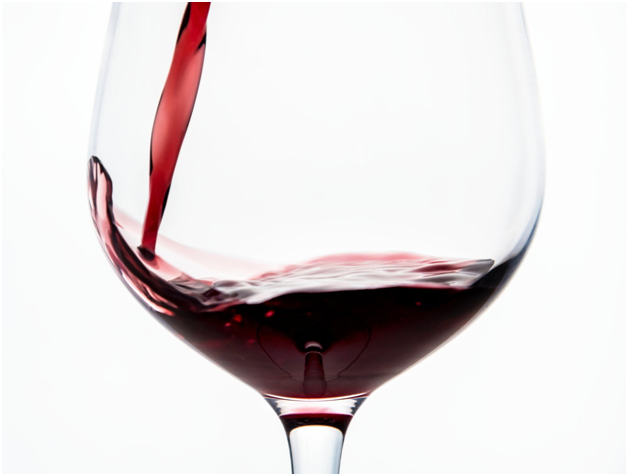So, you have taken an interest in the world of wines —not surprising. Indeed, wines are one of the many things that people took interest since the history, culture, and of course, its taste is all exceptional.
Wines have been around for many centuries which have colonized the world, and many people are taking a liking to it, not only by learning its tastes but also by learning different information about the wine. Today, we will be discussing the things that you need to know about burgundy wine. Interested? Then, let us proceed now to the dissemination of the information.

The Rich History of Burgundy Wine
The Burgundy region about 200 million years ago was part of a vast, tropical sea which has created limestone soils. The soils play an essential role in Burgundy wines since the grounds are the secret behind the zesty minerality that is the hallmark of their wines.
In fact, if you venture into their vineyards, you can find some chunks of limestone or marl (limestone that is mixed with clay) which contains fascinating fossilized sea creatures mixed within.
Winemaking dates back in the 1st century A.D from the Romans wherein the Catholic monks established the vineyard during the Middle Age. The monks grew the grapes for the church and the aristocratic Dukes of Burgundy. Then when the French Revolution happened, the land was given back to the people, who now pride themselves on their attachment to the land.
Now today, the people’s pride continues to grow and is developing and practicing an organic, sustainable, and biodynamic viticulture and winemaking while increasing numbers.
Fact 1: Burgundy Isn’t All About Red and White Wines.
Truly, Pinot Noir and Chardonnay dominate the Burgundy vineyards, but there are more than red and white wines! Did you know that the region produces Cremant de Bourgogne, which is sparkling with a tiny amount of rosé.
The character of this wine is made predominantly from Chardonnay with a proportion of a Pinot Noir, Gamay, and Aligoté— undeniably charming and disarmingly moreish.
Fact 2: Chardonnay Isn’t the Only White Grape.
Indeed, Chardonnay is the most well-known white grape that is produced by Burgundy vineyards, but the vineyards also grow the lesser known variety: Aligoté. Aligoté is not the wine you age since it is on you drink young.
This variety is relegated to the bottom and tops of the slope and not the pristine middle where the terroir is considered to be excellent. However, this wine is still planted since it is regarded as an everyday wine, and that is something everyone wants, right? The Aligoté’s character is a gem, which is dry with herbal and floral noted with an almost lemony character.
Fact 3: Pinot Noir Isn’t the Only Red Grape.
Just like Chardonnay, Pinot Noir dominates the Burgundian reds like some of the Domaine de la Romanee Conti or anything that says “Red Burgundy.” A diverse variety of red is Gamay, which tends to exhibit very similar characteristics of Pinot Noir. Gamay is a fruity red, light-bodied wine with tart flavors of cherries, raspberries, and even banana (which is a result of carbonic maceration).
The different type would be Bourgogne Passe-Tout-Grains which can have Gamay, Pinot Noir, Pinot Grus, Pinot Blanc, and Chardonnay in the blend.
Fact 4: Burgundy’s Terroir is an Ancient Sea life Graveyard.
First of all, the terroir (terr-wah) is the complete natural environment wherein factors such as soil, topography, and climate are included. The characteristic tastes and flavors are imparted with the wine on that said terroir like the Burgundy wines which have been imparted with a zesty minerality as their hallmark.
It was mentioned beforehand that the place where the vineyard is planted was once a part of a vast tropical sea. The Burgundy region was actually covered in a shallow sea wherein many sea creatures lived with hard, calcium-rich shells. Due to the disappearance of the sea, with a bit of fossilization, the region’s then rich with a limestone marl terroir.
Fact 5: Burgundian Wine Isn’t Always Expensive.
While it is indeed true that Burgundy wines take up four out of the five spots in the World’s 50 Most Expensive Wines, there are still affordable but decent Burgundy wines available. In fact, the Grand Cru vineyards, which is considered as the most expensive Burgundies based on terroir, only makes to 2 percent of the Burgundy wine region.
Fact 6: Burgundy Does Not Produce a Lot.
If you think that Burgundy produces a lot of wine because they are incredibly well-known, then let’s break that thinking: they do not. Although they are famous for their wines, Burgundy does produce a surprisingly tiny amount of wine, which only makes up 3 percent of France’s overall wine production.
Takeaway
Now that the information about Burgundy wines has been briefly introduced, it is now your time to shine in telling others about the information shared here! Little by little your knowledge in wines will grow as vast as the vineyards in no time!








Pingback: This Is Why I Love Wine Clubs | My Beautiful Adventures